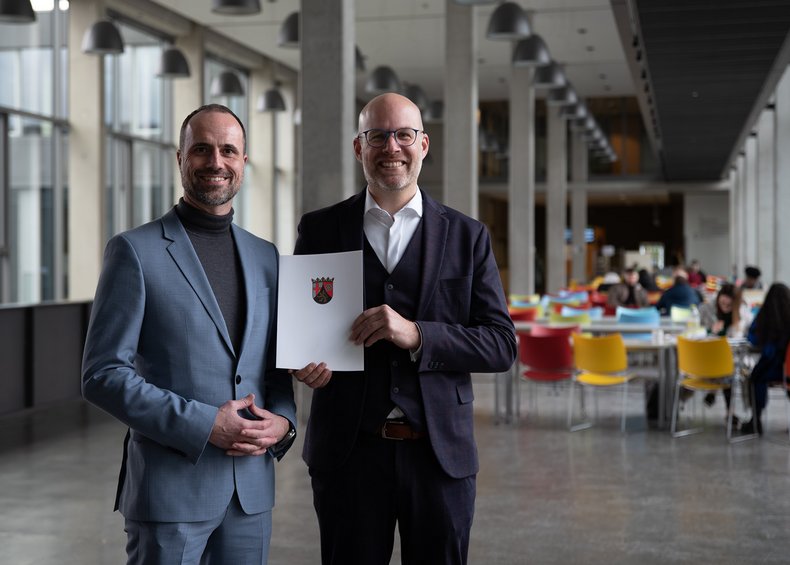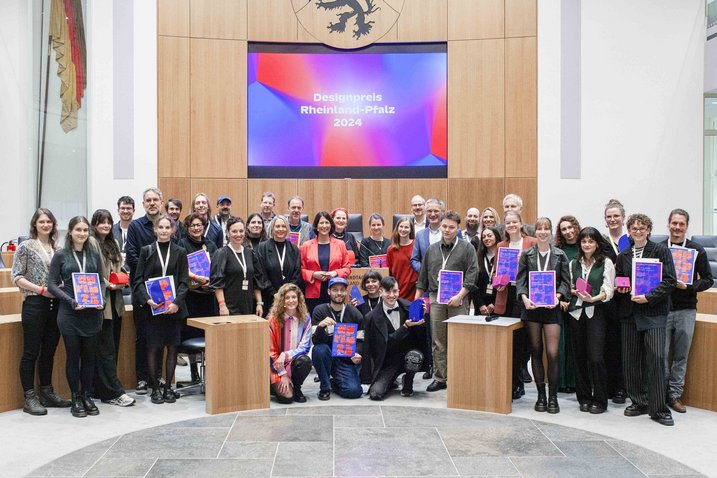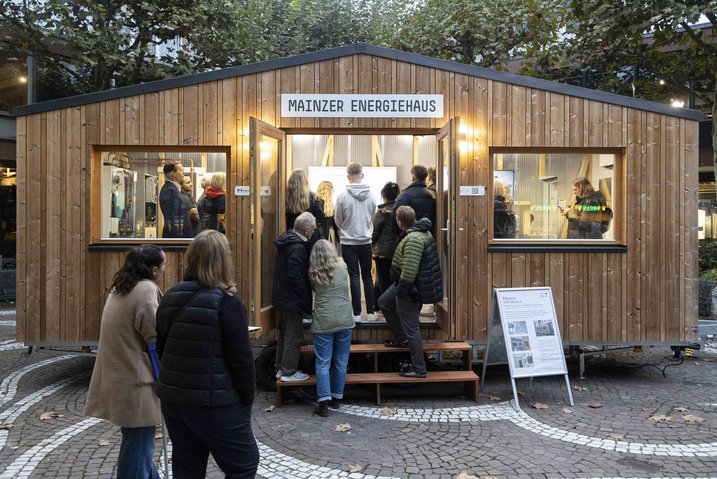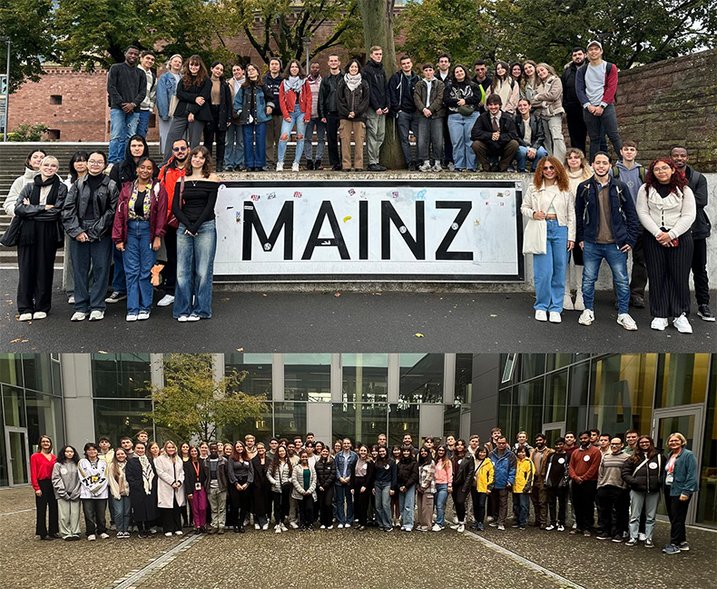As part of the Program for Boosting Digitalization at Universities, Minister of Science Clemens Hoch presented Mainz University of Applied Sciences with a grant totaling 490,000 Euro. The university intends to use these funds to gear its teaching and learning spaces more toward hybrid formats.
“In the past two years of the pandemic, we have seen an enormous surge in digitalization at universities in our country. For many instructors, the motivation to want to use digital tools in their teaching has also grown in the long term. Students also want to see more digitalization in the long term, as the proficient use of digital tools has long since become a key skill on the job market. It is therefore now important to create innovative teaching and learning spaces to enable a flexible and smooth transition between in-person and online forms,” emphasized the Minister of Science, Clemens Hoch. He added that the state government has recognized this and is supporting the development of new innovative spatial concepts as part of the special program for Boosting Digitalization at Universities in the amount of 50 million Euro.
“With the increased focus of teaching and learning spaces on hybrid concepts, Mainz University of Applied Sciences has the opportunity to bring together the best of both worlds, further developing teaching and learning in terms of quality and making it more flexible. Teaching and learning opportunities can be made available to a larger group of people in a significantly more individualized form. In addition, internationalization can be intensified and interdisciplinary collaboration fostered. Personal encounters, discussions, and social learning processes in studying and teaching in person will also be cultivated by our spatial concepts, because that is what studies at our university are all about,” stressed University President Prof. Dr. Susanne Weissman.
“The funding from the Ministry significantly supports Mainz University of Applied Sciences in offering students new types of learning spaces and advancing the development of innovative technologies and infrastructures for teaching and studying. Not only will the digital advancements bring teaching and learning environments up to a state-of-the-art technical standard, they will also support the university in being a place where students with their diverse learning needs are provided with suitable opportunities. Students learn how to use digital tools, better preparing them for the increasingly digital work environment. At the same time, instructors also discover new resources that they can integrate into their classes,” explained Jens Egler, Chancellor of Mainz University of Applied Sciences.
The pandemic has fundamentally changed teaching and learning at universities. Digital elements have made greater inroads into teaching than in the pre-pandemic world, and will continue to be combined with in-person formats where they can support learning processes in a useful way. To better adapt existing learning environments to these changing conditions, Mainz University of Applied Sciences has analyzed the impact of online instruction on students and their skills development and is now responding by redesigning existing spaces that were previously exclusively geared to in-person teaching into hybrid learning spaces.
By redesigning the teaching and learning environments, Mainz University of Applied Sciences aims to better prepare students for the changed conditions in today’s working world brought about by the pandemic, where digital tools have become indispensable. Multifunctional spatial concepts that enable both independent project work, self-directed learning and location-independent group work will enable students to learn how to use digital tools and further develop their self-study and digital collaboration skills. In hybrid learning environments, students will be able to practice alternating between teaching and project work, digital collaboration, and the handling of transfer tasks with online partners from the business world.
This will include interactive media walls, presentation forums, group and video conference breakout rooms, flexible partition modules, multifunctional acoustic and lighting solutions, maker spaces with the appropriate equipment (such as 3D printers, plug-in systems, and simulation tools), and collaboration software. These tools are also available to students outside of classes. The creation of a hybrid teaching and learning environment will serve to better implement new ideas and strengthen students’ innovation skills.




